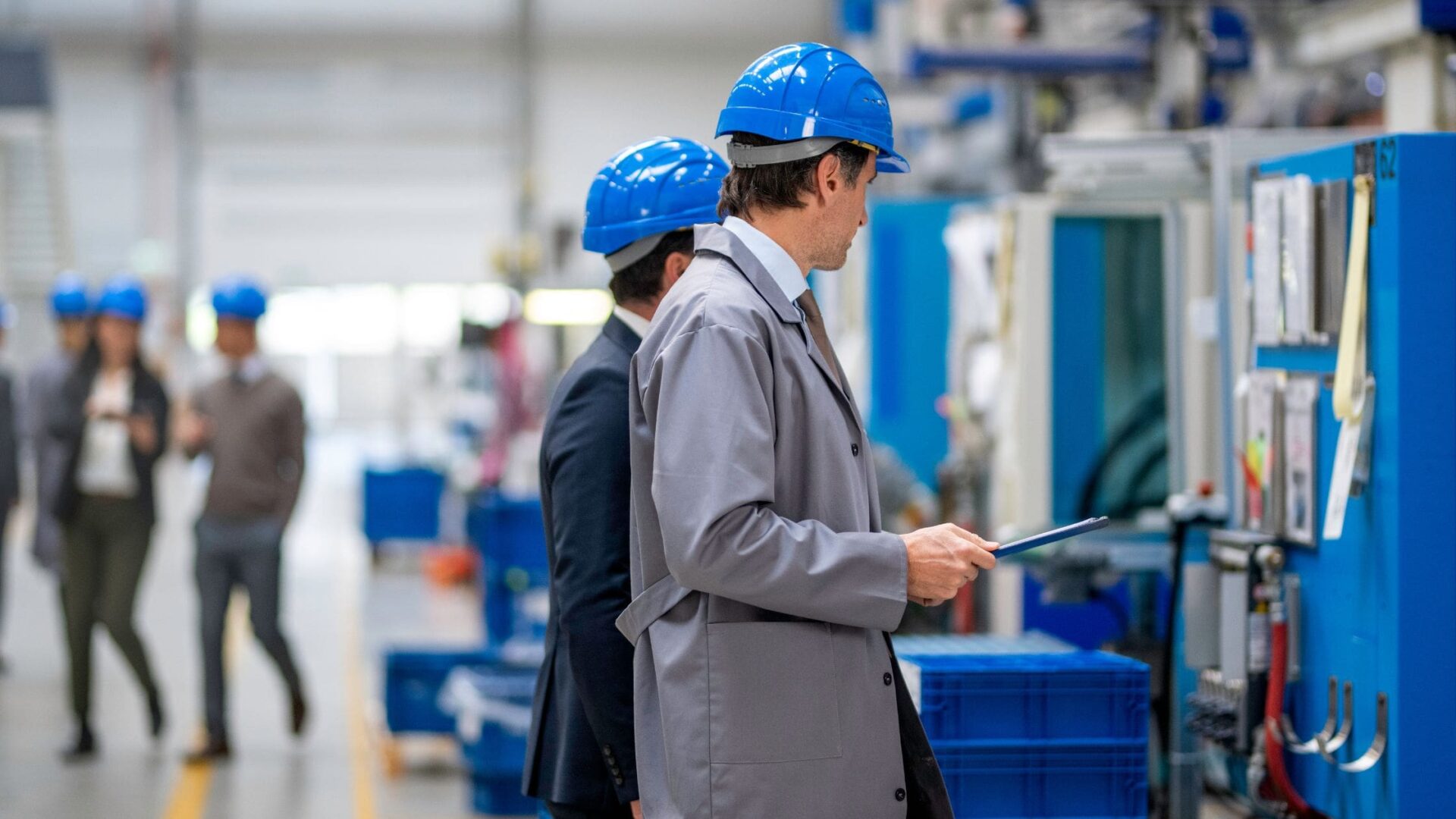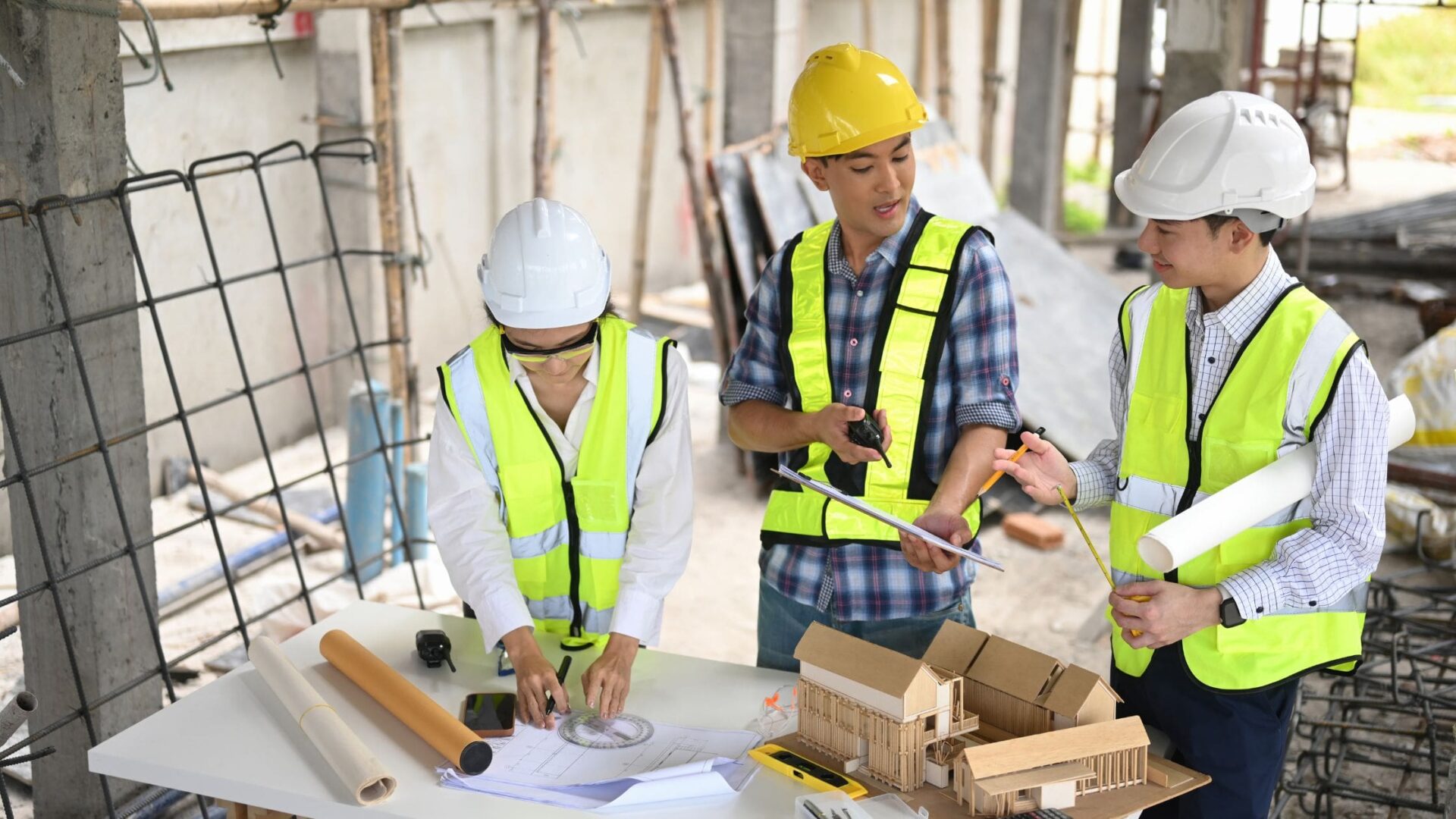Factory inspections are a crucial part of ensuring that your products meet the necessary quality and safety standards. These inspections are more than just routine checks, they’re an essential process that helps maintain the integrity of your manufacturing and supply chain.
By conducting inspections throughout different stages of production, from the very first steps to the final inspection, you can catch potential issues early, saving you time, money, and stress later on.
But to make this process work effectively, it’s key to choose the right third-party inspection service. When you work with qualified professionals, they provide an unbiased and thorough review of your operations, ensuring compliance with industry standards, labor laws, and your supplier agreements.
In this article, we’ll focus on how you can prepare for these inspections, what to expect, and how choosing the right partner can keep your production running smoothly and your products top-notch.
What Is a Factory Inspection?
A factory inspection is a systematic review of a factory’s operations aimed at verifying product quality and ensuring compliance with relevant regulations. It plays a critical role in quality control by evaluating manufacturing processes, working conditions, and adherence to industry standards.
During the inspection process, qualified inspectors examine production procedures, machinery, and quality control records to identify potential defects or violations early on.
Factory inspections may be carried out by internal quality teams or independent third-party agencies, often following benchmarks like ISO 9001 and sector-specific standards. These inspections cover various stages of production, including Initial Production Check (IPC), During Production Check (DUPRO), and Final Random Inspection (FRI).
This multi-stage approach helps catch critical issues before the final product ships, reducing the risk of defective items entering your supply chain.
What is the Difference between Factory Inspection and Factory Audit?
Factory inspection and factory audit serve different but complementary purposes in supply chain management.
A factory audit evaluates a factory’s management systems, production capacity, and social or environmental practices, focusing on broader operational and compliance aspects. In contrast, factory inspections focus specifically on the physical product and production line at specific moments in time, checking for defects, compliance with quality standards, and adherence to supplier agreements.
Audits are typically scheduled annually or semi-annually to assess ongoing compliance and operational capabilities. Factory inspections, however, occur multiple times during each purchase order’s lifecycle, allowing you to monitor production quality at early stages, during manufacturing, and before shipment.
Why Is a Factory Inspection Important?
By regularly conducting inspections on site, you gain visibility into the factory’s operations, helping you identify defective items and critical issues early in the production process. This early detection reduces hidden costs associated with rework, recalls, or delayed shipments that can harm your supply chain management.
Inspections also help ensure compliance with industry standards, labor laws, and supplier agreements, safeguarding your business from legal risks. Many manufacturers now use factory inspection findings as key metrics to evaluate supplier performance. Choosing qualified inspectors and following proper factory inspection preparing steps lets you maintain quality and safety at various stages, from early production checks to the final inspection, improving your overall manufacturing process.
Ensures Product Quality and Safety in Factories
Product inspections are essential to maintain high quality and safety standards throughout the manufacturing process. Factory inspectors monitor production procedures and working conditions, ensuring factories meet quality standards and regulatory requirements. These inspections reduce the likelihood of defects and safety hazards, protecting the final product’s quality before it reaches the market.
Inline inspections conducted during various stages of production typically reduce defect rates by 30–50% compared to inspecting only at shipment. This approach allows you to identify and correct issues promptly, keeping your factory’s operations aligned with standard operating procedures and supplier agreements.
Mitigate Risks and Ensure Compliance
Factory inspections are a vital tool for mitigating risks related to non-compliance with regulations and certifications. Inspectors review relevant documentation and factory authority adherence to labor laws, industry standards, and inspection requirements. Failing to meet these can result in costly recalls, legal penalties, and damage to your company’s reputation.
For example, regulatory breaches can lead to fines exceeding US $100,000 plus expenses related to recall logistics. Conducting inspections at various stages of production helps you avoid such costly violations by identifying defects and compliance issues early.
Build Trust and Credibility
Passing consistent factory inspections builds strong confidence among buyers and stakeholders. When your factory demonstrates regular compliance with quality standards and inspection requirements, it shows a commitment to maintaining quality throughout the manufacturing process. Transparency plays a crucial role in supplier–client relationships by providing clear evidence of compliance and proper documentation, such as quality control records and reports.
Survey data shows that 72% of global buyers prioritize factories with a proven third-party inspection record. This means that your factory’s ability to consistently pass inspections significantly impacts your reputation and supplier agreements.
Improve Productivity and Efficiency
Thorough factory inspections can greatly enhance productivity by identifying and addressing issues early in the production process. By monitoring production procedures and inspecting equipment on site, you reduce downtime caused by defective items or machinery failures. Factories that implement inline checks combined with corrective-action tracking often report an 8–12% increase in Overall Equipment Effectiveness (OEE).
This improvement directly translates into cost savings and smoother operations. Conducting regular inspections as part of your factory inspection preparing and monitoring schedule ensures compliance with industry standards and helps maintain quality. As a result, you protect your supply chain from disruptions, optimize manufacturing processes, and improve the efficiency of your factory’s operations over time.
What are the Main Steps of the Factory Inspection Process?
The factory inspection process involves several critical steps designed to maintain quality and ensure compliance throughout the manufacturing process. First, the inspection date is scheduled based on the production timeline and supplier agreements.
Before the visit, factory inspection preparing includes reviewing relevant documentation such as quality control records, standard operating procedures, and production procedures.
On site, qualified inspectors examine the factory’s operations, machinery, and working conditions. They carry out product inspections at various stages, including early production checks and the final inspection, to catch defective items and critical issues early.
Inspectors gather information on compliance with labor laws, industry standards, and inspection requirements. After completing the inspection, they report findings and recommend corrective actions.
How To Prepare for a Factory Inspection?
Start by defining the inspection scope, including which production lines and products will be reviewed. You should ensure all relevant documentation is up to date, such as quality control records and standard operating procedures.
Clarify responsibilities among your team, making sure employees understand inspection requirements and the importance of compliance. Conduct an internal audit two to four weeks before the scheduled third-party inspection to identify potential risks or defects early.
This proactive approach allows you to address issues before the official visit. Additionally, confirm calibration of critical equipment and prepare your factory’s operations for the inspection date.
Essential Inspection Requirements
EU food-contact materials must comply with Framework Regulation (EC) 1935/2004. In the U.S., children’s products require CPSIA testing.
So, when preparing for a factory inspection, it’s crucial to understand the typical requirements you must meet:
- Compliance with industry standards and labor laws.
- Adherence to client-specific demands and supplier agreements.
- Thorough review of quality control records and production procedures.
- Meeting special regulations for specific industries like food, electronics, or textiles.
- Awareness of local or regional rules affecting inspection criteria and timing.
How Do You Define the Scope and Objectives?
You should specify which products, production lines, or manufacturing processes will be inspected. This clarity ensures that factory inspectors focus on the critical aspects that align with your business goals, supplier agreements, and quality standards. Setting the scope also helps identify potential risks and inspection requirements related to compliance and labor laws.
It’s best practice to document these parameters in a concise, one-page Inspection Master Plan. This plan outlines the inspection objectives and scope and should be shared with all relevant parties at least seven days before the inspection date. Doing so promotes alignment between your factory authority and inspection team, streamlining the inspection and improving your supply chain management.
Which Documents and Records Need to Review?
You need to gather inspection-related paperwork such as previous audit reports, standard operating procedures (SOPs), quality control records, and product certifications. These documents provide evidence of compliance with industry standards and supplier agreements, supporting the factory’s operations.
Maintaining strong record-keeping practices helps inspectors verify adherence to quality control and safety procedures. Using digital tools or standardized formats for documenting findings improves data integrity and tracking over time. Many companies now expect inspection reports uploaded to a cloud dashboard within 24–48 hours after the site visit.
What Should You Expect During a Factory Inspection?
During a factory inspection, you can expect a structured, step-by-step process carried out on site by qualified inspectors. The inspection begins with an opening meeting where the inspection date, scope, and objectives are confirmed.
Inspectors then review relevant documentation such as quality control records, standard operating procedures, and previous audit reports. They proceed to examine the production process, machinery, and working conditions to identify any defective items or critical issues.
Throughout the inspection, the team gathers information on compliance with supplier agreements, labor laws, and industry standards. Product inspections occur at various stages, including early detection during production and the final inspection before shipment.
When Does Pre-Inspection Preparation Begin?
Pre-inspection preparation starts well before the inspection date, focusing on last-minute checks and alignments. One of the most crucial steps is verifying the calibration status of all critical test equipment to ensure accuracy, with calibration ideally done within the past 12 months. This step helps maintain quality and compliance with industry standards.
Additionally, factory inspection preparing includes reviewing the scope of the inspection, gathering necessary documentation, and confirming employee readiness. Ensuring that standard operating procedures are followed and that the factory’s operations align with supplier agreements helps avoid potential issues during the inspection.
How are Notifications and Scheduling Handled?
Factories and third-party inspection services coordinate inspection dates well in advance, typically confirming the schedule at least five working days before the inspection date. This lead time allows all parties to prepare adequately and avoid last-minute conflicts.
Sharing a contact list for real-time updates ensures smooth coordination during the inspection process. Timely communication helps address any unexpected issues or changes and supports compliance with inspection requirements.
What Occurs During the Opening Meeting?
The opening meeting marks the start of the factory inspection and sets clear expectations for everyone involved. During this session, factory inspectors, factory authority representatives, and employees confirm the inspection date, scope, and objectives. This alignment ensures that the inspection process covers all critical aspects related to production procedures, quality standards, and supplier agreements. Attendees review the planned activities and discuss any special requirements or concerns.
Before the facility walkthrough begins, it’s essential to agree on photo permissions and personal protective equipment (PPE) rules. These protocols help protect employee safety and maintain compliance with labor laws and safety regulations.
What Happens During the Facility Tour?
During the facility tour, inspectors focus on key areas within the factory’s operations. They observe production lines closely, checking the manufacturing process for adherence to standard operating procedures and quality control. Inspectors examine machinery, equipment calibration, and working conditions to identify potential defects or compliance violations.
Special attention is given to high-risk zones such as chemical storage and pressure-vessel areas. These zones usually receive an extra 10–15 minutes of scrutiny to ensure safety and regulatory compliance. The tour allows qualified inspectors to gather firsthand information about the factory’s environment and processes, helping maintain quality and support supply chain management.
Which Documents are Typically Reviewed?
Inspectors review essential documents to verify compliance and quality during the inspection. This documentation includes production logs, quality control records, and previous audit reports, all of which provide evidence of adherence to industry standards and inspection requirements.
Reviewing these documents helps inspectors identify discrepancies or violations and assess corrective actions taken by the factory.
Proper record-keeping of relevant documentation is crucial for maintaining a clear history of the factory’s operations and ensuring consistent product inspections.
Inspectors may also check supplier agreements, standard operating procedures, and calibration certificates to support thorough monitoring and quality assurance.
How Do Interviews and Employee Engagement Fit In?
Interviews with factory employees play a significant role in the inspection process. Factory inspectors engage directly with operators, quality control technicians, and supervisors, usually 3 to 5 staff members per shift, to gather insights about production procedures and working conditions.
These conversations help reveal process strengths and uncover potential gaps in compliance or training.
Employee knowledge often highlights critical issues that paperwork alone may not show. Engaging staff also encourages transparency and supports continuous improvement, which is essential for maintaining quality standards and meeting inspection requirements.
What Is Involved in Equipment and Machinery Inspection?
During equipment and machinery inspection, factory inspectors review maintenance records and calibration logs to ensure all tools meet industry standards. Operational safety is a key focus, with inspectors checking for signs of wear, unusual noises, or irregular vibrations that could indicate potential issues. These warning signs often serve as early detection of defects that may affect product quality.
Data shows that machines with preventive maintenance compliance below 85% tend to experience higher defect rates and increased downtime. By monitoring machinery regularly, qualified inspectors help factories maintain quality and improve the manufacturing process.
Why Is the Closing Meeting Important?
The closing meeting is a crucial stage where inspectors present their key findings and preliminary conclusions. This session allows factory authority and employees to understand critical issues identified during inspections and discuss the significance of any defective items or violations found.
Before the final inspection report is issued, inspectors clarify next steps, including corrective actions and follow-up schedules. This meeting fosters transparent communication and helps ensure that necessary documentation and records related to compliance are reviewed and addressed promptly.
What are Post-Inspection Follow-Up and Corrective Actions?
After receiving the inspection report, your factory should start with a thorough root cause analysis to identify why issues occurred. Implementing corrective measures addresses these problems and prevents recurrence, aligning production procedures with supplier agreements and labor laws.
Scheduling follow-up inspections ensures that corrective actions are effective and compliance is maintained over time.
Many factories use a 30-60-90-day action plan to systematically close findings. This continuous improvement cycle is vital for maintaining quality control and meeting industry standards, significantly impacting product inspections and overall supply chain management.
What are the Common Mistakes to Avoid During a Factory Inspection?
One frequent oversight is failing to update relevant documentation, which can hinder the review of quality control records and production procedures.
Another error is neglecting to conduct regular inspections at various stages, leading to late detection of defective items or compliance issues.
Some factories also underestimate the importance of employee training, resulting in misinterpretations of inspection requirements and industry standards.
Preventive measures include thorough preparation, ensuring all necessary documentation is accurate and accessible.
You should also schedule inspections at critical points in the manufacturing process and invest in ongoing training for factory inspectors and employees.
Why Is Lack of Preparation a Major Pitfall?
Lack of preparation can severely compromise your factory inspection outcomes. Rushing or ignoring the necessary planning often leads to incomplete inspections and overlooked critical issues.
Without clear factory inspection preparing, qualified inspectors may not have access to essential documentation or production procedures, making it difficult to verify compliance with supplier agreements and labor laws.
To avoid last-minute scrambling, you should start preparation weeks before the inspection date. Organize quality control records, calibrate equipment, and ensure employees understand their roles during the inspection.
Why Does Insufficient Training Undermine Inspections?
Insufficient training among inspectors or factory staff can result in missed defects or misinterpretation of specifications, weakening your quality control efforts.
Poorly trained personnel may fail to identify critical issues or correctly apply inspection requirements, which jeopardizes compliance with industry standards and labor laws.
To prevent this, schedule refresher courses at least every 12 months and conduct job-specific competency tests. This ongoing education helps factory inspectors stay current with evolving standards and supports accurate product inspections.
How Does Subjectivity Distort Findings?
Relying on personal judgment during a factory inspection can lead to inconsistent pass or fail results. When inspectors use subjective opinions instead of measurable criteria, the quality of the inspection process suffers. This variability undermines efforts to maintain quality and comply with industry standards.
To reduce subjectivity, use detailed checklists with objective tolerances—for example, ±0.5 mm for dimension checks.
Such clear standards help inspectors evaluate production procedures and product inspections fairly. Establishing measurable criteria supports consistent monitoring of the factory’s operations and ensures compliance with supplier agreements and inspection requirements.
Why Is Inconsistency a Hidden Risk?
Changing inspection methods or sampling plans during the inspection process can skew data trends and distort your factory’s quality control records. This inconsistency makes it difficult to identify genuine defects or track improvement over time.
To avoid this risk, lock sampling parameters like Acceptable Quality Level (AQL) and lot size before inspections begin. Consistent use of these parameters ensures reliable product inspections and meaningful comparisons across various stages.
What are the Dangers of Overreliance on Technology?
While technology enhances factory inspections, relying on it too heavily can introduce risks. Advanced tools require human oversight to ensure proper application and interpretation of data. Technology failures or misapplications may lead to inaccurate inspection results or missed critical issues.
Qualified inspectors must balance using technology with hands-on assessments to maintain quality and compliance with inspection requirements and labor laws.
Combining human expertise with digital tools ensures that critical aspects of the manufacturing process are properly monitored and supports effective corrective actions when necessary.
What are the Best Practices for a Successful Factory Inspection?
Successful factory inspections combine industry guidelines with proven strategies to maintain quality and compliance.
Start by thoroughly preparing the factory inspection process, ensuring all relevant documentation and quality control records are current.
Use qualified inspectors familiar with the factory’s operations and supplier agreements to conduct inspections at various stages, including early detection and final inspection.
Continuous improvement is essential. After inspections, review reports carefully, implement corrective actions, and track progress.
Regular inspections supported by standard operating procedures help maintain safety, comply with labor laws, and meet industry standards.
How Do You Establish Clear Inspection Criteria?
Establishing clear inspection criteria relies on detailed checklists and standardized guidelines tailored to your industry and factory scope.
These criteria define acceptable tolerances, such as dimension limits or material specifications, ensuring consistency during product inspections.
For example, electronics manufacturers may require strict control over component soldering, while food factories focus on hygiene standards and compliance with safety regulations.
Well-defined criteria help factory inspectors objectively assess production procedures, detect defective items early, and ensure compliance with inspection requirements.
Why are Standard Operating Procedures (SOPs) Necessary?
Standard operating procedures (SOPs) play a crucial role in maintaining consistent quality and compliance during factory inspections. SOPs provide clear instructions for production procedures, quality control, and safety measures, helping both factory inspectors and employees understand their roles and responsibilities.
By following SOPs, you reduce variability in the manufacturing process and improve early detection of defects. SOPs also support thorough review documentation, ensuring inspections align with industry standards, labor laws, and supplier agreements.
Which Factors Should You Consider When Choosing a Factory Inspection Services Provider?
When choosing a 3rd party provider of factory inspection services, you should evaluate their adherence to ISO 9001-aligned procedures, as this demonstrates a commitment to industry standards and inspection requirements.
Transparent pricing models help you avoid unexpected costs and ensure the inspection process aligns with your budget.
Other critical factors include the provider’s experience with your product type, their ability to gather relevant documentation, and how effectively they support corrective actions.
Choosing qualified inspectors familiar with production procedures, labor laws, and supplier agreements improves your supply chain management and protects your factory’s operations.
Why are Experience and Reputation Key?
Providers with a proven track record have demonstrated competence in conducting inspections across various industries and manufacturing processes. You should review client references to assess their ability to meet inspection requirements consistently.
A strong reputation often includes on-time inspection delivery rates exceeding 95%, which is crucial for maintaining your production schedule and final inspection dates. Experienced inspectors understand critical aspects of quality control and safety, ensuring your factory complies with labor laws and supplier agreements.
How Do Cost and Budget Influence Your Decision?
Typical fee structures include flat day rates or per-man-day charges. While budget constraints are understandable, unusually low fees can signal rushed inspections or the use of inexperienced inspectors, risking overlooked defects or compliance violations.
Investing in quality inspections protects your manufacturing process from costly defects, supplier disputes, and potential violations of industry standards or labor laws. Allocating sufficient resources to factory inspection preparing ensures thorough review documentation and accurate reports, which ultimately supports continuous improvement and protects your supply chain from risks and complaints.
Which Inspection Services Should a Provider Offer?
When evaluating a factory inspection service, look for a provider offering a full range of inspections. Essential services include pre-production (PP) sample checks, inline inspections during the manufacturing process, final inspections, and container loading inspections. Social audits assessing working conditions and labor compliance are also crucial for many companies.
Aligning the inspection service mix with your product-risk profile is vital. High-risk products require more frequent and detailed inspections, while lower-risk items may need fewer checks.
A provider offering this flexibility, combined with qualified inspectors familiar with your industry standards and production procedures, can effectively help maintain quality and ensure compliance throughout your supply chain.
Why are Communication and Reporting Capabilities Essential?
You need a provider who delivers transparent, actionable reports that include findings, photos, and compliance status. Effective reporting methods might include cloud-based dashboards or mobile apps that provide instant access to inspection results and relevant documentation.
Regular feedback loops between you, factory inspectors, and your suppliers enhance early detection of critical issues. This transparency supports corrective actions and continuous improvement, helping you maintain quality and comply with supplier agreements and industry standards. Timely, clear communication ensures that inspection results influence your supply chain management decisions and protect your final product’s quality.
How Important Are Responsiveness and Turnaround Time?
Responsiveness and turnaround time can make or break your production schedule. Delays in receiving inspection reports can cause costly setbacks in manufacturing, shipping, or final inspection phases. Industry best practice is to receive complete reports within 24 to 48 hours after the inspection date.
Fast turnaround enables you to review quality control records, address defective items quickly, and initiate corrective actions without disrupting your supply chain. A responsive inspection provider keeps communication open, coordinates well with your factory authority, and supports timely scheduling, ensuring your manufacturing process runs smoothly and cost-effectively.
Why Is Knowledge of Local Regulations and Standards Critical?
Each market has unique inspection requirements, labor laws, and industry standards that can significantly affect compliance. For example, in the U.S., children’s products require CPSIA testing, while in the EU, food-contact materials must comply with Framework Regulation (EC) 1935/2004. A provider familiar with these regional rules can help you navigate critical aspects like supplier agreements and ensure your factory’s operations meet both local and international quality standards. This expertise protects your supply chain from violations and costly recalls while supporting consistent quality control throughout the manufacturing process.
How Does Customer Service and Support Impact the Process?
Providers who offer clear communication, timely updates, and problem-solving assistance help you navigate potential inspection issues smoothly.
For example, if unexpected delays occur on site, a responsive inspection service can quickly coordinate corrective actions and reschedule inspections to minimize impact on your production process.
Effective support also ensures proper documentation management and helps maintain compliance with supplier agreements and industry standards.
Investing in strong customer service protects your product’s quality and strengthens your relationship with factory inspectors and suppliers throughout various stages of the inspection process.
Conclusion
Picking the right factory inspection partner is about trusting someone who gets your business as much as you do.
We know how tricky local laws and quality standards can be, and you need a team that supports your supply chain every step of the way. Clear and fast communication during the inspection process isn’t just nice to have, it’s key to keeping your product quality high and compliance on point.
Best practice means getting those full inspection reports within 24 to 48 hours after the inspection date, so you can jump on any issues before they become problems. When you work with a qualified, reliable partner who fits your production needs, you’re not just protecting your manufacturing, you’re setting the stage for continuous improvement and stronger supplier relationships.
We’re here to help you make that happen.









